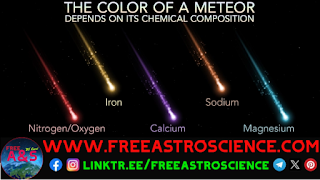With the Perseid meteor shower about to peak from the night of August 12th to the early morning of August 13th, prepare yourself for an awe-inspiring display of shooting stars. The best way to enjoy this celestial event is in a dark location away from city lights. As your eyes adjust to the dark, you'll start to see the meteors, which can appear anywhere in the sky.
These enigmatic luminosities have been sparking curiosity for ages. But what exactly is a meteor and what makes it shimmer with such brilliant hues?
In actuality, meteors are streams of light that occur when minute particles of dust and rock, known as meteoroids, penetrate the Earth's atmosphere at high velocities.
Unraveling the Glow of Meteors
The science behind the luminescence of meteors is incredibly intricate and captivating. As meteoroids make their entry into the Earth's atmosphere, they heat up due to the friction with air molecules, causing them to emit light. This phenomenon is termed 'ionisation'.
This collision prompts the atoms to either shed or acquire electrons, turning into ions. These highly-charged ions discharge energy as they traverse the atmosphere.
The energy set free by these ions provokes the air molecules to radiate light, which manifests as the glowing trail trailing a meteor. The hue of the light emitted by the meteor is contingent on the type of ion and the quantum of energy discharged. For instance, ions of oxygen and nitrogen produce green and red light, respectively, while sodium ions give off an orange-yellow radiance.
Decoding Meteor Colors and Their Significance
The hues of meteors can offer clues about their composition and origins.
Here's a breakdown of common colors and their meanings:
🟠 Orange-Yellow: A yellow meteor is typically composed of sodium. These meteors are also termed "sodium fireballs."
🟡 Yellow: A meteor radiating a bright yellow glow indicates the presence of iron.
🟢 Green or teal: Green or teal-toned meteors are predominantly made of magnesium, indicating that the meteor hails from a comet.
🔴 Red or orange: Meteors of these colors suggest a high concentration of nitrogen or oxygen.
🟣 Purple or violet: A meteor glowing with a purple or violet hue implies a high content of calcium.
The Influence of a Meteor's Speed and Size
The velocity and size of a meteor also have a bearing on its colors. Generally, a meteor's speed spans from 25,000 to 160,000 mph, based on its size. A faster meteor will heat up and ionize more air molecules, resulting in a brighter and more colorful glow. Similarly, a larger meteor will generate more ions, hence producing a more vivid glow."


Post a Comment